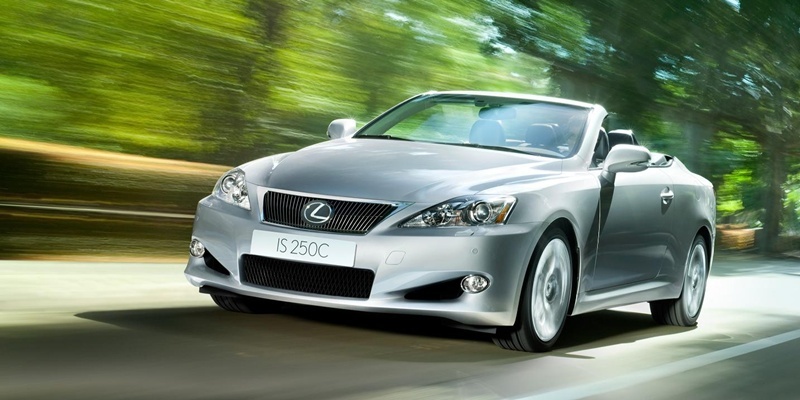The IS 250C is definitively a car for grown-ups. Its handsome but understated styling, comfort-over-performance driving dynamic and elegant interior all seem designed specifically for the over-50s.
The same goes for the price tag aside from the odd ultra-yah St Andrews student, few young or even youngish people will be able to afford £36,750 for the entry-level car, let alone £45,900 for the top-of-the-range SE-L Multimedia version I drove.
But then the car’s high price tag adds to its exclusivity, which will appeal to the kind of well-heeled buyers who frequent the more expensive side of the Lexus showroom.
The IS 250C comes with a folding hard-top roof, which makes more sense in the UK as it allows the car to function as a coupe for most of the year. The three-piece roof whizzes up or down in 20 seconds, meaning the operation can be performed at traffic lights if a sudden rain shower spoils play.
With the lid up there’s a generous 583 litres of boot space although, in reality, the long, shallow space means it isn’t as practical as that figure makes it sound.
Drop the top and you reduce the boot space to a much more humble 235 litres enough for a couple of overnight bags, but not much more.
But then you’ve got the back seats for extra stowage space. The IS 250C has more room in the rear than most convertibles enough to squeeze adults in for a short hop but they’re clearly only meant for occasional use.
There’s just one power option for the IS 250C and that’s a 2.5 litre V6. Its headline figure of 205bhp is impressive but where all those horses go, I do not know.
What’s certain is not all of them make their way to the driven rear wheels 0-62mph in nine seconds is not an impressive time for a car with 205bhp under the bonnet.
But then, the IS 250C is made for cruising not racing: its V6 unit is as smooth as they come and is whisper quiet unless revved hard, when it emits a dignified purr.
The brake and accelerator are fairly heavily weighted, requiring a good deal of pressure before they respond. This is something I like cars with feather-light controls cause my big clodhoppers problems but others may disagree.
Top up or down, the suspension is excellent and it takes a particularly savage pothole to unsettle the car. With its weighty controls and absence of hot-hatch pace, it isn’t the most agile car in the world but it has plenty of grip and will hustle through bends when required.
The touchscreen buttons for stereo and heating controls look great and make the dashboard look neat and minimalist, but they’re a bit of a pain to use and by the end of my week with the car I was hankering for old-fashioned buttons.
All IS 250Cs come with parking sensors, which are essential as rear visibility is poor, and the range-topping model adds a reversing camera as well as an excellent Mark Levinson stereo, hard-disk satnav and Bluetooth connectivity.
If you can live without some of those goodies I’m sure the basic stereo system still sounds pretty good you’d be better off going for the entry-level version.
At £37,000, the IS 250C makes sense. At £46,000, it does not.
Price: £45,900.0-62mph: 9.0sec.Top speed: 130mph. Economy: 30.7mpg. CO2 emissions: 213g/km.
